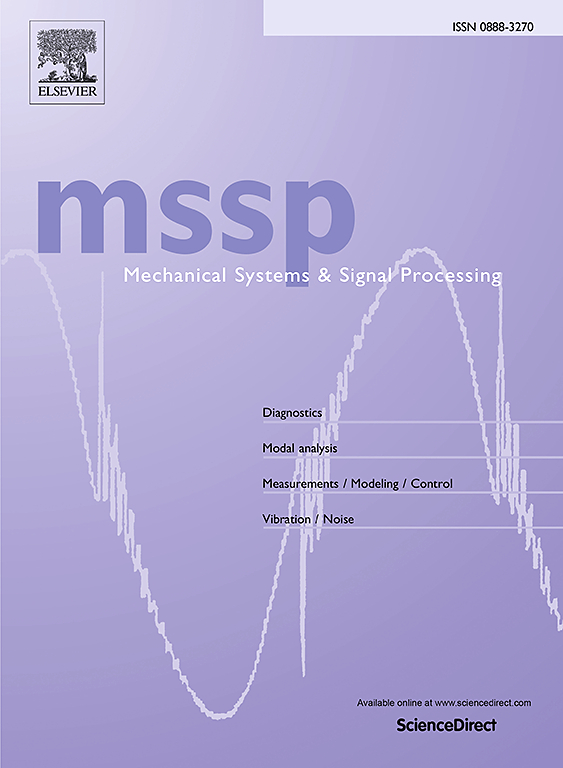基于复值小波变换的频谱和能量兼容(SEC)双向地震动生成
IF 8.9
1区 工程技术
Q1 ENGINEERING, MECHANICAL
引用次数: 0
摘要
现代抗震设计规范要求在非线性时程分析(NLTHA)中同时输入水平双向地震动,以确保全面的地震评估。这一要求凸显了产生与目标最大方向频谱(RotD100)兼容的双向地面运动的重要性。然而,准确的地震反应评估在很大程度上取决于选择适当的地震输入。例如,Arias强度积累过程Ia(t),它量化了加速度的能量含量,在基于性能的地震设计中引起了越来越多的关注。因此,有必要提出一种能够产生RotD100响应谱和能量兼容(SEC)双向地震动的方法。一种新的方法被引入来解决这一挑战,利用从临界阻尼振荡器的脉冲响应中导出的复值小波。与以往通过分别处理双向地震动的两个正交分量来实现RotD100响应谱兼容的方法不同,本文提出的复值连续小波变换(CWT)方法将两个水平分量表示为复数的实部和虚部。利用40对种子记录对两个目标RotD100响应谱生成SEC双向地震动,验证了该算法的有效性。结果表明,修正后的双向地震动与目标RotD100响应谱基本一致,Ia(t)积累过程与标度记录基本一致。此外,种子记录的关键属性,如组分级光谱变异性、非线性时程轨迹特征和周期相关极性等,在很大程度上得到了保留。此外,与Montejo提出的基于实值cwt的方法相比,Ia(t)累积过程的迭代修正导致了位移时程的改进。本文章由计算机程序翻译,如有差异,请以英文原文为准。
Generation of spectrum and energy-compatible (SEC) bi-directional ground motions via complex-valued wavelet transform
Modern seismic design codes mandate the simultaneous input of horizontal bi-directional ground motions in nonlinear time history analysis (NLTHA) to ensure comprehensive seismic assessments. This requirement highlights the critical importance of generating bi-directional ground motions that are compatible with the target maximum-direction spectrum (RotD100). However, accurate seismic response evaluations significantly depend on the selection of appropriate seismic inputs. For instance, the Arias intensity build-up process Ia(t), which quantifies the energy content of an accelerogram, has attracted increasing attention in performance-based seismic design. Consequently, it is necessary to propose a method capable of generating RotD100 response spectrum and energy-compatible (SEC) bi-directional ground motions. A novel approach is introduced to address this challenge, leveraging complex-valued wavelets derived from the impulse response of an under critically-damped oscillator. In contrast with previous methods that achieved RotD100 response spectral compatibility by separately manipulating two orthogonal components of bi-directional ground motions, the proposed complex-valued continuous wavelet transform (CWT) method represents the two horizontal components as the real and imaginary parts of complex numbers. The efficacy of the proposed algorithm is validated through the generation of SEC bi-directional ground motions using 40 pairs of seed records for two target RotD100 response spectra. Results suggest that, with the proposed algorithm, the modified bi-directional ground motions closely align with the target RotD100 response spectra and the Ia(t) build-up process mirrors that of the scaled records. Furthermore, the key attributes of the seed records, such as component-level spectral variability, nonlinear time history trace characteristics, and period-dependent polarity, are largely preserved. Additionally, the iterative modification of the Ia(t) build-up process leads to the improved displacement time history compared with the real-valued CWT-based method proposed by Montejo.
求助全文
通过发布文献求助,成功后即可免费获取论文全文。
去求助
来源期刊

Mechanical Systems and Signal Processing
工程技术-工程:机械
CiteScore
14.80
自引率
13.10%
发文量
1183
审稿时长
5.4 months
期刊介绍:
Journal Name: Mechanical Systems and Signal Processing (MSSP)
Interdisciplinary Focus:
Mechanical, Aerospace, and Civil Engineering
Purpose:Reporting scientific advancements of the highest quality
Arising from new techniques in sensing, instrumentation, signal processing, modelling, and control of dynamic systems
 求助内容:
求助内容: 应助结果提醒方式:
应助结果提醒方式:


